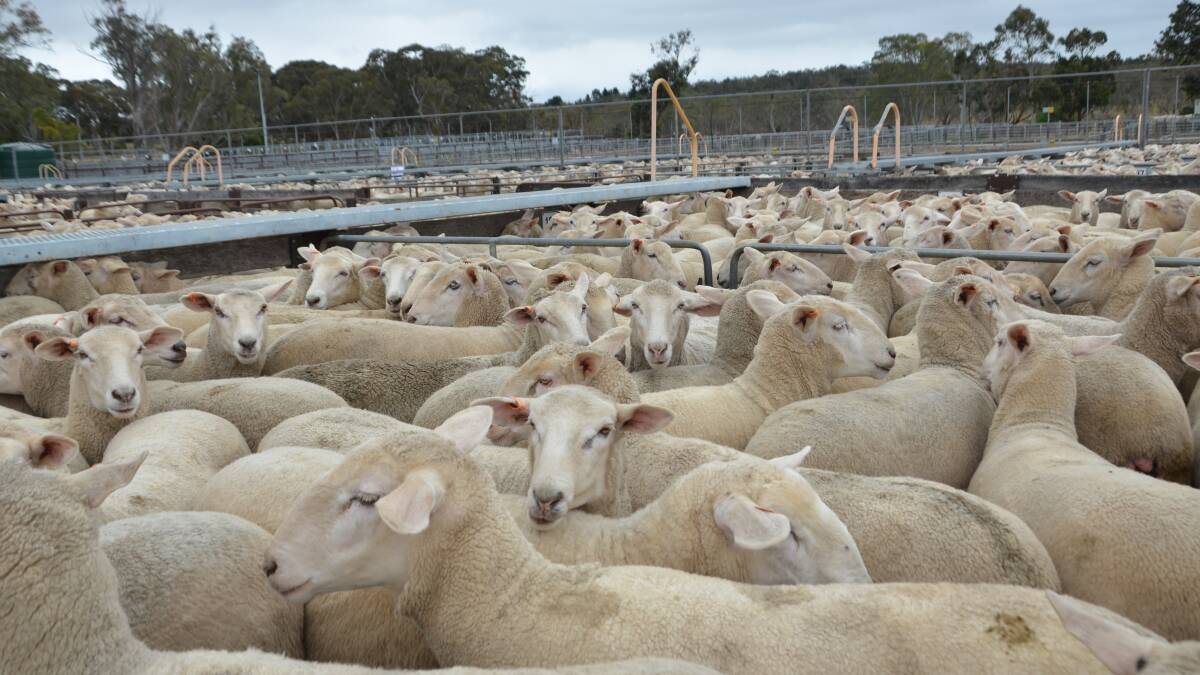
The normally large summer sheep and lamb yardings have almost halved as the rampant Omicron COVID-19 variant outbreak slashes the meat processing sector's workforce, leaving them with skeleton crews.
Subscribe now for unlimited access to all our agricultural news
across the nation
or signup to continue reading
On the back of uncertainty, lamb markets in both Victoria and NSW opened 2021 on a downward trend with rates dipping heavily.
And experts say the sheepmeat market will face a volatile road for the next few weeks, that is until numbers flow enough to show the true state of supply and demand.
"As processors pulled back from purchasing, average prices for sheep and lambs fell $10- $30 at some markets last week," NLRS reporter Leanne Dax said.
"At the first sale for the year at Wagga Wagga prices fell about $20 a head for lamb in a small offering of around 7800 lambs and sheep."
She said the price fluctuations add to market instability due to producers reacting and skipping prime sales in protest and over kill space at most abattoirs.
With many lambs being withheld from normal sale fixtures, the question remains about the backlog of lambs the situation is creating and who will miss out on the end product.
Anecdotal evidence is suggesting producers are holding on to their lambs for an extra four weeks or even longer.
But Nutrien Ag Solutions Bendigo livestock manager Richard Leitch said for how long the backlog of lambs will remain is unknown.
"Last week at Bendigo sale there were 4000 lambs, but the last sale before Christmas there was 32,000," Mr Leitch said.
"This Monday there are 9000 when normally we would be seeing 30,000 or more."
He said contract lambs have also missed out on being killed.
"The likes of Coles contract a lot of lambs, and the Australian Lamb Company (ALC) has been closed for two and a half weeks," he said.
"So you have 2.5 weeks of contract lambs not being killed and the markets have dropped off on numbers also.
"That is going to create an issue further down the track if abattoirs can't get full teams back where they are running three to four shifts.
"With the capacity the industry have got to kill, we just can't get on top of it unless they are running three to four shifts through the abattoirs and we need staff to do that."
Mr Leitch said with supermarkets wanting 22 to 26kg lambs, if producers are holding lambs for four to five weeks, those lambs are quickly going to become 28 to 32kg.
"And now we are experiencing thunderstorms through Victoria and what happens with thunderstorms at this time of the year, it smashes all the dry feed, one minute they've got feed, the next minute they've got none," he said.
"Those farmers that are feeding lambs will be looking at those costs as well, to hold them on to them for another four weeks is a huge deal."
BM Livestock's Budgie Schiller, Eudunda, SA, said there is a real sense of uncertainty in the sheepmeat industry.
"People are unsure what to do because there are no over-the hooks prices anywhere. They also don't know how long this will go on," Mr Schiller said.
"Producers and feedlotters are lucky enough they have the feed availability to keep their lambs going, but how long is a piece of string?
"The longer you hang on to them....well they are getting bigger day by day and ready to go, but they have nowhere to go."
Mr Schiller said the next question will be around the honouring of contracts.
"The longer they are hung on to, the heavier they are getting. Those that have contracts - if they've been offered $8.50 or $9 a kilo for them.......are those contracts going to be honoured?"
He said at Dublin sheep sale on Tuesday prices slipped by $10 to $15 in places.
Numbers were also subdued, with less than half of their normal sheep numbers and about 6000 lambs.
"Store lambs have come off the boil a bit, the dearest lambs were just over $200, but there are some tidy lambs making $150 to $160 that were previously making $180 to $200," he said.
"For the first time ever, TFI didn't buy any sheep.
"It is really going to hit a few in the back pocket very hard."
Slaughter for lambs was down 34pc on 2020 levels at 216,931 due processors struggling to keep plants open as workers either suffer from COVID-19, are in isolation or are simply staying away from work due to fears of contracting the virus.
Thomas Elder Markets analyst Matt Dalgleish said east coast lamb slaughter is well below the five-year average.
"The east coast lamb slaughter opened at 189,621 head, that's 46pc below the five-year average for this time in the season," Mr Dalgleish said.
"Meanwhile, weekly east coast sheep slaughter is sitting 54pc under the average seasonal trend for this week in the year, at just 54,503 head for the week ending January 8th."
RELATED READING:
Indicators returned this week for 2022, with most categories performing similar to the levels they closed at in 2021.
The Eastern States Trade Lamb Indicator (ESTLI) ended last year at 854c and has closed this week slightly down at 849/kg cwt.
In the west, the trade lamb Indicator at 819c, which is 6pc stronger than where it left off in 2021.
The only indicator to really feel the brunt of the processing limitations was the heavy lamb which was down 4.4pc to 832c/kg.
Start the day with all the big news in agriculture! Sign up below to receive our daily Farmonline newsletter.


